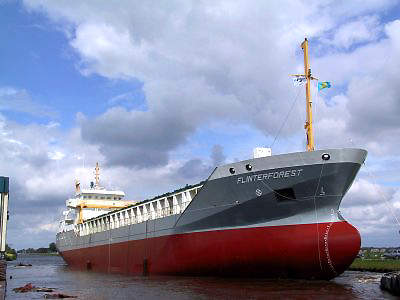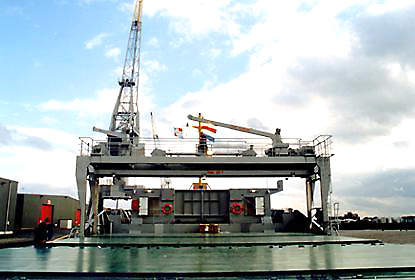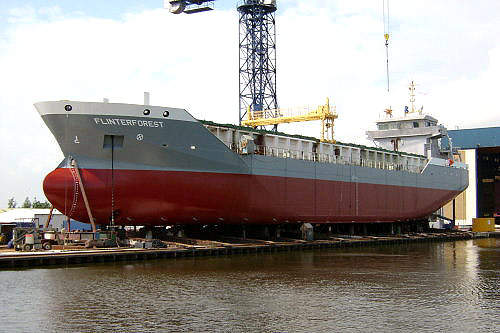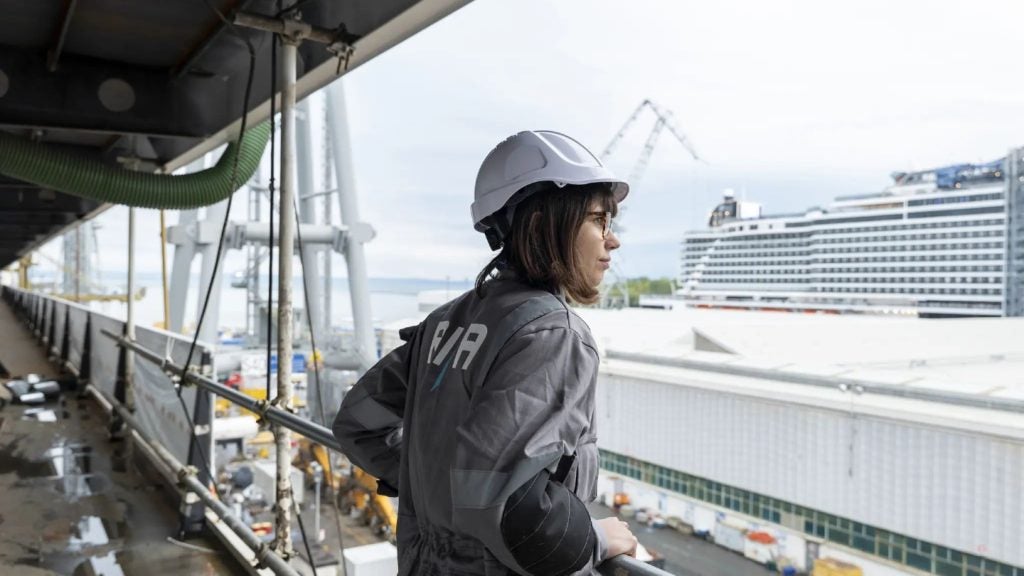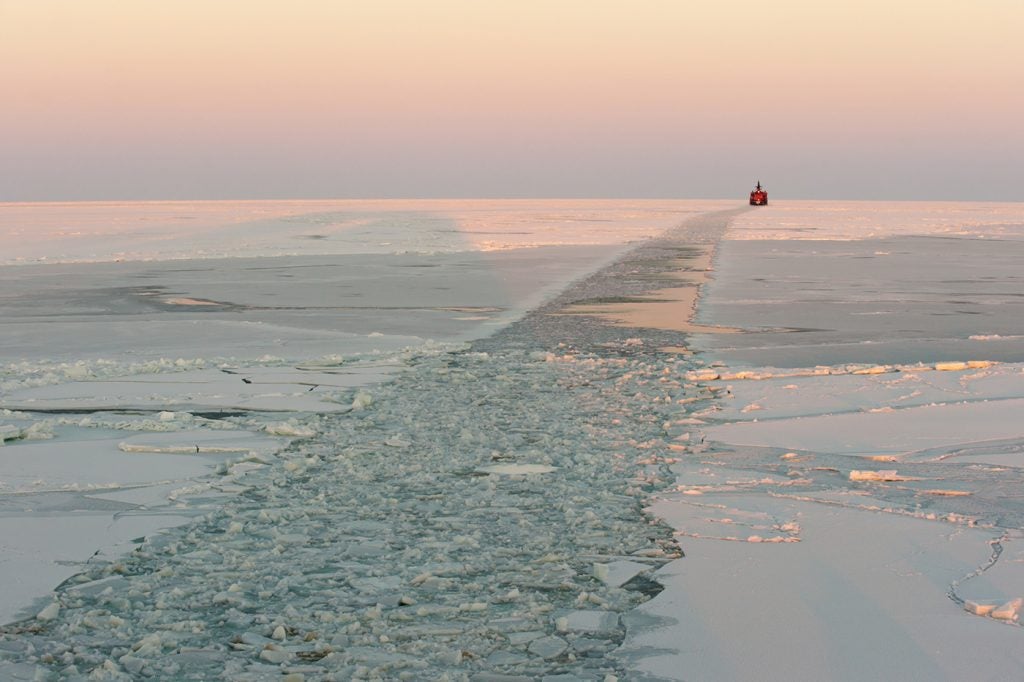The Flinterforest was built at the Ferus Smit’s Westerbrook shipyard for Flinter Groningen. The design features a raised forecastle and quarterdeck with the deckhouse located aft. It was delivered in 2004. Flinterforest is jointly managed and operated by Netherlands-based ForestWaveNavigation and Flinter.
The dry cargo container vessel has an overall length of 89.78m or 84.99m between perpendiculars. It has a 14m moulded breadth and a 7.5m depth. Its design draught is 5.95m. For safety, it has a double hull construction. The ship can cruise at a speed of 12.5kt.
The ship has a water ballast capacity of 1,883m³ as well as tanks able to store 44m³ of freshwater, 28m³ of gas oil and 230m³ of heavy fuel oil. The heavy fuel oil (HFO) system incorporates an Azcue transfer pump as well as an Alfa Laval fuel oil and gas oil separator system. The HFO is heated by a Heatmaster hot water system, linked to the 300kW heat exchanger taken from the main engine. There is also a 36kW hot water heater and a 285W oil-fired hot water heater. The water is
circulated by four pumps.
CARGO CAPACITIES
The vessel has a single cargo hold, which measures 59m in length, with a beam of 11.5m and a 9m depth. The cargo capacity is 5,990m³ (211,535ft³). This allows the Flinterforest to accommodate 102 TEU containers and another 42 TEU on its hatch covers, giving a total of 144 TEU. The hold has a 50t weight capacity while the hatches can accommodate a 48t maximum.
The cargo hatch covers – supplied by Coops and Nieborg – are pontoon hatch type with the covers handled by a travelling gantry crane. In addition to installing or stacking the weather deck covers, it is used for handling the two grain bulkheads located in the hold.
In case of fire, there are general service pumps in the engine room and a fire fighting / deck washing line. The cargo areas are protected by a CO2 total flooding system.
POWER, PROPULSION AND MANOEUVRING
The ships electrical power comes from a diesel genset consisting of a MAN D28866 LXE 30 engine and a Stamford HCM 434E generator. There is also a Stamford HCM 534 C shaft genset which can develop 230kW at 400V AC.
In addition, there is an emergency power / harbour power system. The power is fed in three phase 400VAC, 230VAC and 24V DC
The main engine is a MaK 8M25 medium speed diesel unit, able to develop 2,640kW at 705rpm. It is cooled by a freshwater cooling system, which features high and low temperature cooling circuits and a heat exchanger. This engine is linked to a Flender GUCP gearbox by way of a Vulkan Benelux flexible coupling. The gearbox is linked to a 3,200mm diameter Wartsila Lips 4D 10000 controllable pitch propeller.
The ship is steered by a single Burke rudder which is controlled by a Tenfjord rudder handling system. There is also a frequency controlled 275kW Jastram bow thruster for manoeuvring in port.
ACCOMMODATION
There are two 12-person life rafts as well as a rescue boat. The accommodation is located aft, with messrooms and cabins.
NAVIGATION AND COMMUNICATIONS
On top of the accommodation block, is the navigation bridge with an array of navaids including a gyromagnetic compass, two x-band radar systems and a GPD and DGPS system, as well as an echosounder and Doppler velocity log (DVL). Amongst the other equipment are a pair of Jotron Tronsart radar transponders, GMDSS and non-GMDSS portophones, two Inmarsat C terminals and two hadheld VHF sets.
The vessel is classified by Bureau Veritas under the notatioin +1A Hull a MACh, General Cargo ship / Containter Ship, Unrestricted Navigation, AUT-IMS, Ice Class 1A (Finnish/Swedish Ice Class Rules).

